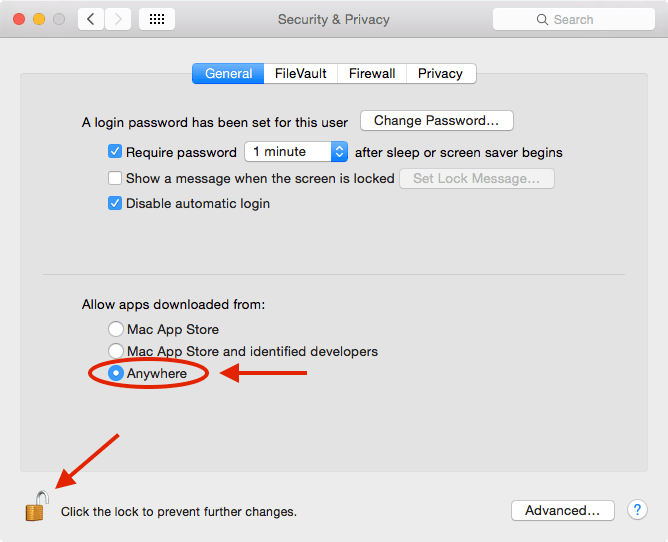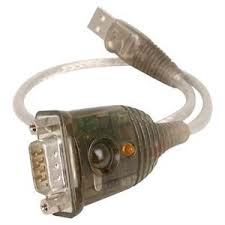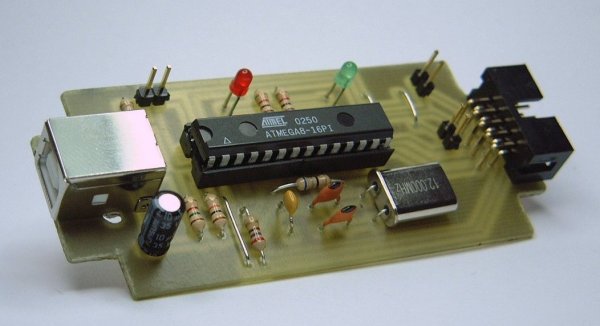
PL2303 USB to Serial Driver for Mac OS v.0.3.1 Advertisement Supports different manufacturers of PL2303 based USB to serial dongles like ATEN, IOData, Elcom, Itegno, Ma620, Ratoc, Tripp, Radioshack, Dcu10, SiteCom, Alcatel, Samsung, Siemens, Syntech, Nokia, MS3303H - Some bug fixes - Added new vendor IDs and product IDs. The USB-Serial adapter and software drivers are capable of providing a no-firmwarechange feature that enable USB interface to be transparent to serial port peripherals with minimum modifications. I am unable to install the Keyspan driver on Mac OS X 10.13. There is a new feature in Mac OS X 10.13 that imposes a new level of security for the installation of 3rd party drivers. About half way through the Keyspan driver installation, the new OS puts up a prompt telling the user that they can't proceed until they provide explicit permission.
USB port types and names
USB (Universal Serial Bus) is an industry standard for connecting computers and other devices. It's available with many types of ports, and each type has a unique shape. On Mac computers, USB is available with these ports, depending on your Mac model:
Usb 3.0 Driver Mac
USB-A
Type USB-A ports are commonly called USB, USB 2, or USB 3 ports, depending on the USB specification they support. Vegas 10 pro for macbook. They aren't reversible, so a USB-A connector plugs into the port only when oriented correctly.
USB-C
Type USB-C ports are available as either standard USB-C ports or Thunderbolt 3 ports that also support USB-C connections. Hard disk for mac. They both look the same, and the connector plugs into the port in either orientation.
Learn more about identifying the ports on your Mac, as well as the adapters and cables you can use to connect older devices to type USB-C ports.

USB specifications
USB specifications are important primarily when you want the most speed and power for your USB device, or your device needs more power or is using too much power. Every USB port supports a particular USB specification, which determines the port's maximum>USB specifications on MacData transferPowerUSB 3.1 Gen 2
Also known as USB 3.2 Gen 2
Up to 10 GbpsUp to 15W at 5VUSB 3.1 Gen 1
Also known as USB 3.2 Gen 1 or USB 3
Up to 5 GbpsUp to 900 mA at 5VUSB 2.0
Up to 480 MbpsUp to 500 mA at 5VUSB 1.1
Up to 12 MbpsUp to 500 mA at 5V
Nokia photo transfer for mac support. To learn which specification is supported by a type USB-A or type USB-C port on your Mac model:
- Choose Apple menu > About This Mac, click Support, then click Specifications.
- Check the System Information app for more details, including about USB devices connected to USB ports on your Mac. Select USB in the sidebar, then select a USB bus on the right.

Get the best performance from your USB devices
Usb To Serial Driver Usa28x Mac Os X Sierra
USB specifications all work with each other, but speed and power are limited by the cable or device that uses the earliest specification. For example, if you connect a USB 3 device to USB 2 port, your device is limited to USB 2 speeds, and it can't draw more power from the port than can be delivered over USB 2. In other words, to get the best performance, make sure that the USB port on your Mac and the USB cable to your device meet or exceed the USB specification of the device itself.

Usb To Serial Driver Mac
If your Mac doesn't recognize a USB device after you plug it into your Mac:
- Check all connections: Unplug the device from your Mac, then plug it back in, and make sure that all cables and adapters are securely connected at both ends. Test with another cable or adapter, if available.
- Plug the device directly into your Mac instead of a USB hub or other device, and if necessary test with a different USB port on your Mac or device.
- Some devices need their own software, such as drivers or firmware. Others work without additional software. Check with the maker of your device, and install all available Apple software updates as well.
- If your device came with an AC power adapter, use it. Some devices can be powered by the USB port on your Mac. Others need more power than your Mac can provide.
- Restart your Mac.

PL2303 USB to Serial Driver for Mac OS v.0.3.1 Advertisement Supports different manufacturers of PL2303 based USB to serial dongles like ATEN, IOData, Elcom, Itegno, Ma620, Ratoc, Tripp, Radioshack, Dcu10, SiteCom, Alcatel, Samsung, Siemens, Syntech, Nokia, MS3303H - Some bug fixes - Added new vendor IDs and product IDs. The USB-Serial adapter and software drivers are capable of providing a no-firmwarechange feature that enable USB interface to be transparent to serial port peripherals with minimum modifications. I am unable to install the Keyspan driver on Mac OS X 10.13. There is a new feature in Mac OS X 10.13 that imposes a new level of security for the installation of 3rd party drivers. About half way through the Keyspan driver installation, the new OS puts up a prompt telling the user that they can't proceed until they provide explicit permission.
USB port types and names
USB (Universal Serial Bus) is an industry standard for connecting computers and other devices. It's available with many types of ports, and each type has a unique shape. On Mac computers, USB is available with these ports, depending on your Mac model:
Usb 3.0 Driver Mac
USB-A
Type USB-A ports are commonly called USB, USB 2, or USB 3 ports, depending on the USB specification they support. Vegas 10 pro for macbook. They aren't reversible, so a USB-A connector plugs into the port only when oriented correctly.
USB-C
Type USB-C ports are available as either standard USB-C ports or Thunderbolt 3 ports that also support USB-C connections. Hard disk for mac. They both look the same, and the connector plugs into the port in either orientation.
Learn more about identifying the ports on your Mac, as well as the adapters and cables you can use to connect older devices to type USB-C ports.
USB specifications
USB specifications are important primarily when you want the most speed and power for your USB device, or your device needs more power or is using too much power. Every USB port supports a particular USB specification, which determines the port's maximum>USB specifications on MacData transferPowerUSB 3.1 Gen 2
Also known as USB 3.2 Gen 2
Up to 10 GbpsUp to 15W at 5VUSB 3.1 Gen 1
Also known as USB 3.2 Gen 1 or USB 3
Up to 5 GbpsUp to 900 mA at 5VUSB 2.0
Up to 480 MbpsUp to 500 mA at 5VUSB 1.1
Up to 12 MbpsUp to 500 mA at 5V
Nokia photo transfer for mac support. To learn which specification is supported by a type USB-A or type USB-C port on your Mac model:
- Choose Apple menu > About This Mac, click Support, then click Specifications.
- Check the System Information app for more details, including about USB devices connected to USB ports on your Mac. Select USB in the sidebar, then select a USB bus on the right.
Get the best performance from your USB devices
Usb To Serial Driver Usa28x Mac Os X Sierra
USB specifications all work with each other, but speed and power are limited by the cable or device that uses the earliest specification. For example, if you connect a USB 3 device to USB 2 port, your device is limited to USB 2 speeds, and it can't draw more power from the port than can be delivered over USB 2. In other words, to get the best performance, make sure that the USB port on your Mac and the USB cable to your device meet or exceed the USB specification of the device itself.
Usb To Serial Driver Mac
If your Mac doesn't recognize a USB device after you plug it into your Mac:
- Check all connections: Unplug the device from your Mac, then plug it back in, and make sure that all cables and adapters are securely connected at both ends. Test with another cable or adapter, if available.
- Plug the device directly into your Mac instead of a USB hub or other device, and if necessary test with a different USB port on your Mac or device.
- Some devices need their own software, such as drivers or firmware. Others work without additional software. Check with the maker of your device, and install all available Apple software updates as well.
- If your device came with an AC power adapter, use it. Some devices can be powered by the USB port on your Mac. Others need more power than your Mac can provide.
- Restart your Mac.
Learn more
- USB 3 devices can create wireless interference that affects Wi-Fi and Bluetooth devices. Learn how to resolve Wi-Fi and Bluetooth issues caused by wireless interference.
- Mac notebook computers with USB-C or Thunderbolt 3 can charge over that port using a compatible USB-C power adapter and cable.
This device provides a
simple and easy way to connect Universal Serial Bus (USB) and Serial port interface.
With the advantage of USB port, users have the capability to utilize the peripheral with
serial port interface in an easy to use environment such as plug and play & hot swap
function. This adapter is designed for ideal connections to Cellular Phone, Digital
Camera, Modems or ISDN terminal adapter with over 120k bps data transfer rate.
The USB-Serial adapter and software drivers are capable of providing a no-firmwarechange
feature that enable USB interface to be transparent to serial port peripherals
with minimum modifications.
Package COntent
Hardware:
0001 USB-Serial adapter, USB type A to type B cable
Software:
0001 USB-Serial driver on CD-ROM
Product Features
0001 USB Specification Rev. 1.1 compliant
0001 Support the RS232 Serial interface
0001 Over 120k bps data transfer rate
0001 Support remote wake-up and power management
System Requirementes
PC
0001 IBM PC 486DX4-100 MHz or higher or compatible system
0001 Available USB port
0001 CD-ROM drive
0001 Windows® 98, Windows® ME, Windows® 2000, Windows® XP, Windows® 2003
Windows® CE, Windows XP Professional x64 Edition.
MAC
0001 Power G3, G4, or I-Mac
0001 Available USB port
0001 CD-ROM drive
0001 Mac OS 8 & 9 & 10.1~10.4(Tiger)
